

The Sun is a self-luminous ball of gas held together by its own gravity and powered by thermonuclear fusion in its core. Our Sun is a typical star among the various stars in the Galaxy, average in mass, size and temperature. It is a ``dwarf'' star (compared to supergiant stars, see AST122 next term) with a radius of 109 Earth radii and a mass of 3.3x105 Earth masses.
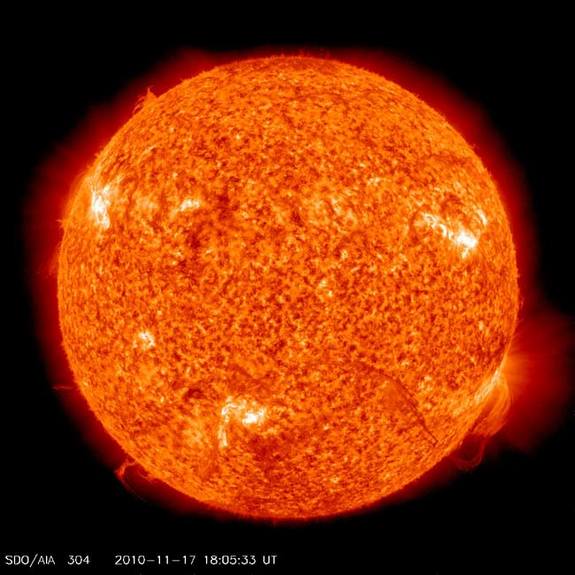
The Sun's lifetime is about 10 billion years, meaning that after this time the hydrogen in its core will be depleted. The Sun will then evolve into a red giant, consuming Mercury, Venus and the Earth in its expanded envelope. The Sun is currently 5 billion years old.
The most outstanding characteristic of the Sun is the fact that it emits huge quantities of electro-magnetic radiation of all wavelengths. The total output of the Sun is 3.99x1033 ergs/sec. Only 1.8x1024 ergs/sec strikes the Earth (since it is small in angular size), which is called the solar constant, but the amount of energy reaching the Earth in 30 mins is more than the power generated by all of human civilization. This energy is what powers the atmosphere and our oceans (storms, wind, currents, rainfall, etc.).
The energy emitted by the Sun is divided into 40% visible light, 50% IR, 9% UV and 1% x-ray, radio, etc. The light we see is emitted from the ``surface'' of the Sun, the photosphere. The Sun below the photosphere is opaque and hidden.
Solar Structure:
The Sun is divided into six regions based on the physical characteristics of these regions. The boundaries are not sharp.
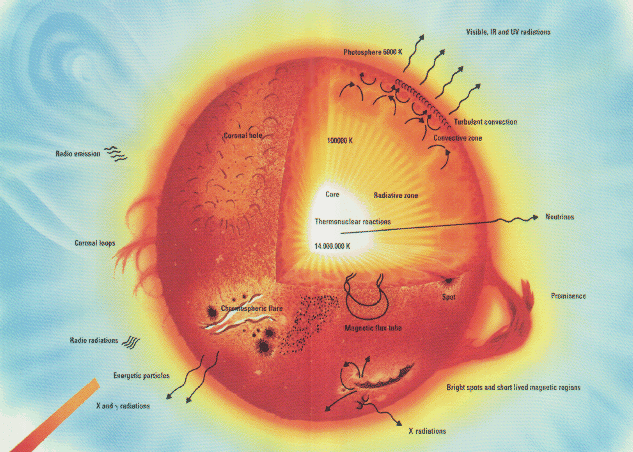
The radii and temperatures of these regions are the following:
The Sun rotates differentially since it is not a solid. The solar equator completes one rotation in 25 days. The poles complete one rotation in 36 days.region radius temperature ------------------------------------------------- fusion core 0.3 solar radii 15x10^6 K radiation shell 0.3-0.6 solar radii 6x10^6 K convection shell 0.6-1.0 solar radii 1x10^6 K photosphere 100 km 6000 K chromosphere 2000 km 30,000 K corona 10^6 km 1x10^6 K
Sun's Interior:
Stars form from clouds of gas and collapse under self-gravity. The collapse is stopped by internal pressure in the core of the star. During the collapse, the potential energy of infalling hydrogen atoms is converted to kinetic energy, heating the core. As the temperature goes up, the pressure goes up to stop the collapse. The heat from the collapse is sufficient for the Sun to shine, but only for a timescale of 15 million years (called the Kelvin-Helmholtz time). Since the Sun is 5 billion years old, then it must be producing its own energy rather than shining on leftover energy from formation (like Jupiter).
The structure of the Sun is determined by 5 relations or physical concepts:
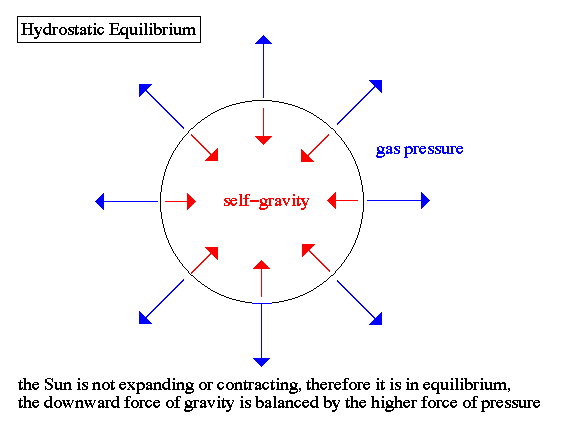





Thermonuclear Fusion:
Energy generation is the heart of the solar process. Normally, particles with like charges (positive-positive or negative-negative) repel each other, this is called electrostatic repulsion. But at temperatures above 15x106 K, the motions of protons are high enough to overcome the electrostatic forces and the nuclei can ``fuse''. Nuclear reactions involve many elementary particles that make up all of matter (this is called the Standard Model). The primary output from nuclear reactions are photons in the form of gamma-rays, but a large number of other particles are important as well.


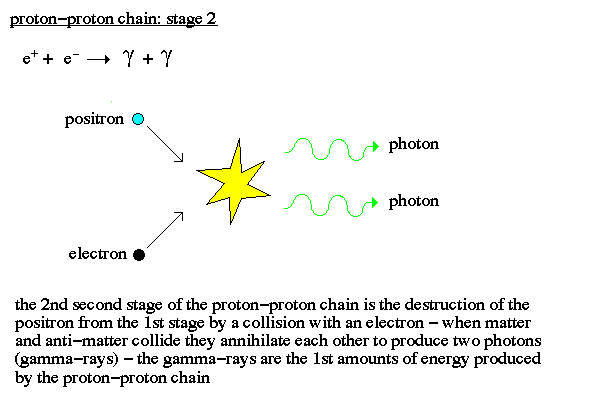
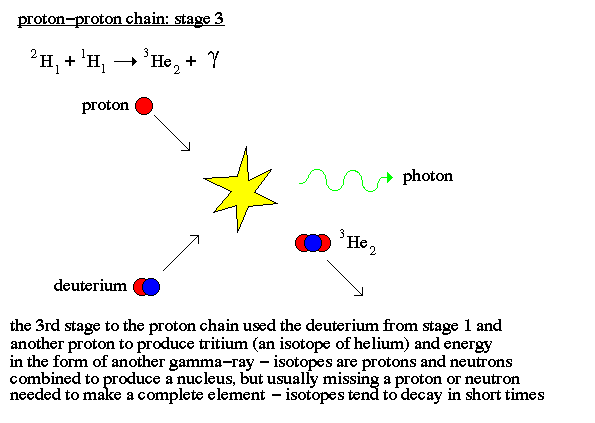
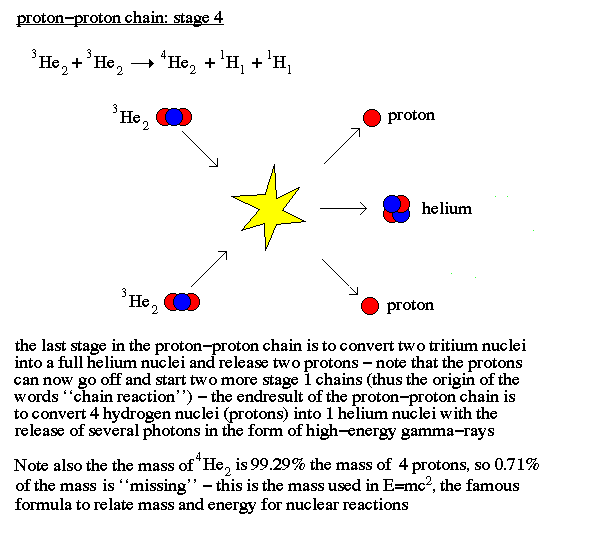
There are several tests to a solar model produced from the about relationships:

Solar Oscillations:
Although direct study of its interior is impossible, insights into the conditions - temperature, composition and motions of gas - within the Sun may be gained by observing oscillating waves, rhythmic inward and outward motions of its visible surface. The study of these solar oscillations is called helioseismology. In many ways, it resembles the study of seismic waves generated by earthquakes to learn about the Earth's interior.


Photosphere:
The photosphere is the effective ``surface'' of the Sun since it is the point where the photons break free of scattering and zip into outer space. However, the photosphere is not a thin surface, but rather has a thickness of about 100 km. Within that 100 km, the temperature drops from 6000 K at the bottom to 4000 K at the top. Lower temperature means less luminosity from Planck's curve, so the edge of the Sun's disk is darker than the center, this is called limb darkening.
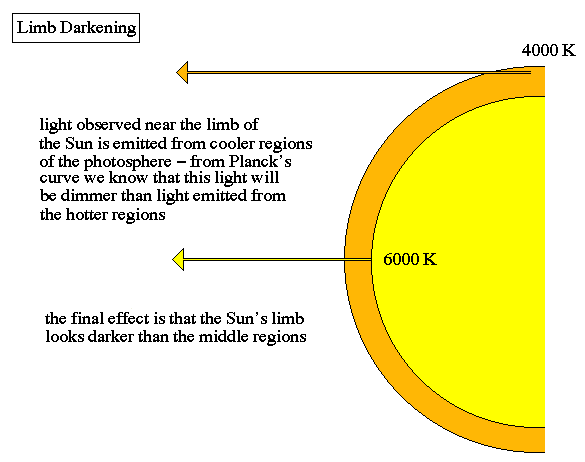
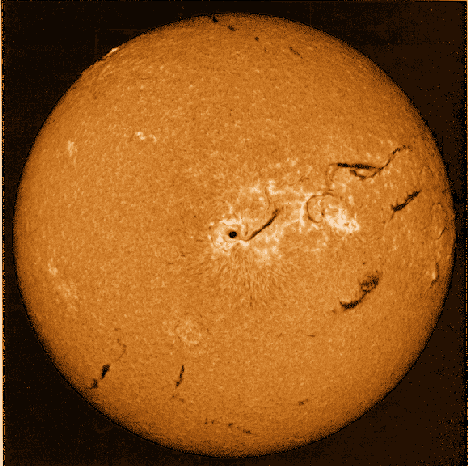
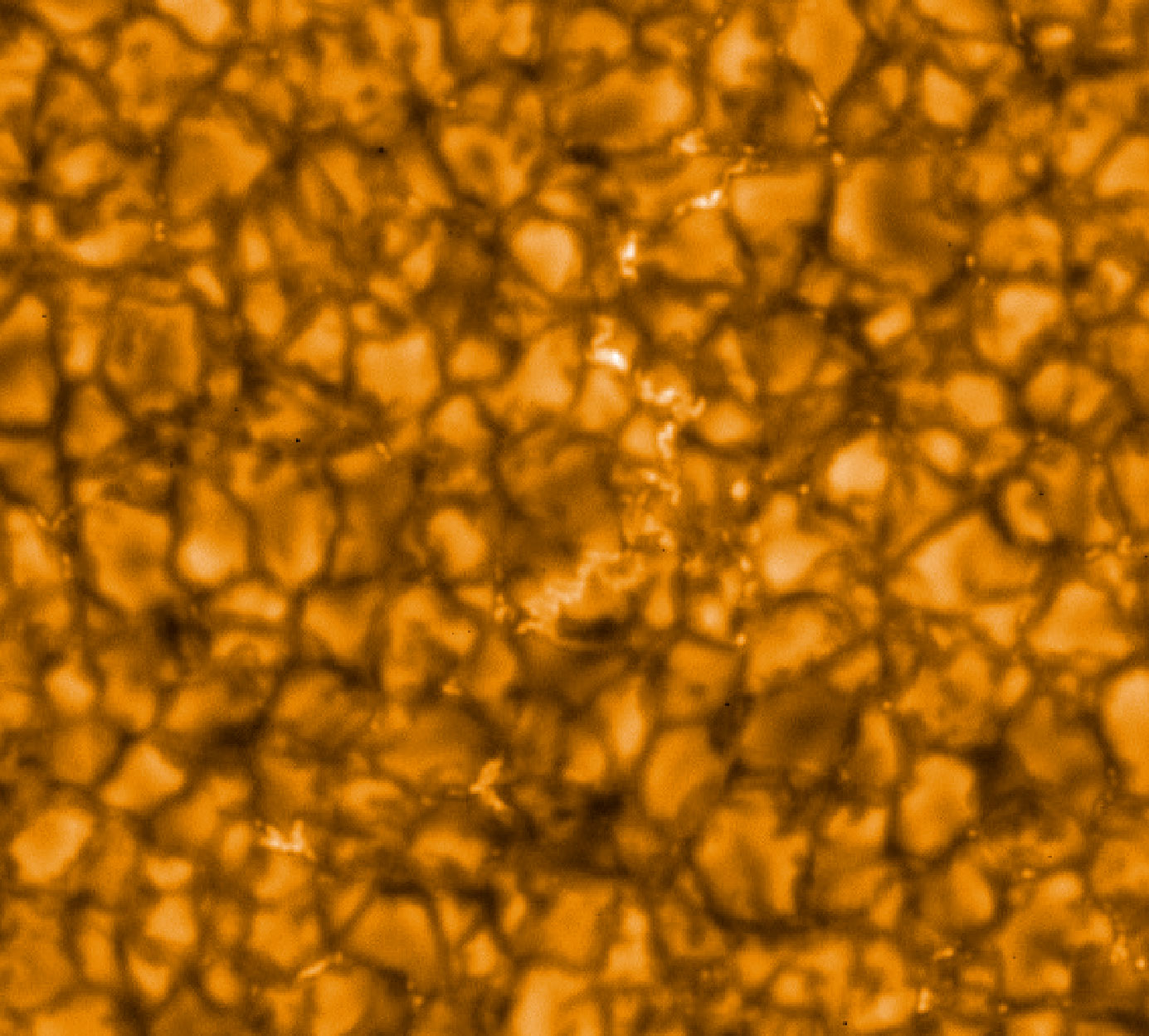
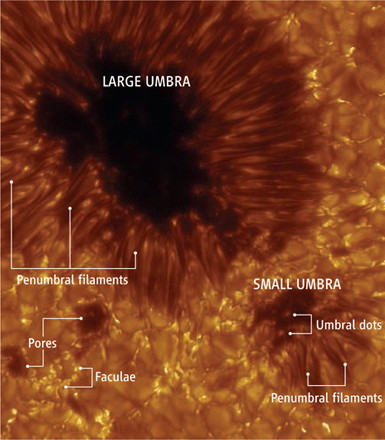
Sunspots pairs are due to magnetic flux tubes on the surface of the Sun. The flux tubes carry energy away causing the surface to be cooler (1800 degrees cooler) than the surrounding material, thus their darker appearance. The sunspots always travel with a north and south pole, oriented along the equator. The number of sunspots per year varys with an 11 year cycle and the peaks are associated with times of high solar activity (many flares and solar storms).


The origin of sunspots and the 11 year cycle are related. The solar magnetic field is unlike the magnetic fields of planets in that it is a surface magnetic field, instead of extending into space it is confined to the photosphere. Magnetic flux tubes can only be created when the surface field lines distort and overlap until a loop pops off the photosphere. The endpoints of the loop become the north and south poles of the sunspot. The process begins with a quiet Sun (low activity) and magnetic field lines that are smooth and lined up north/south on the Sun's surface. The differential rotation of the Sun causes the magnetic lines to wrap up.
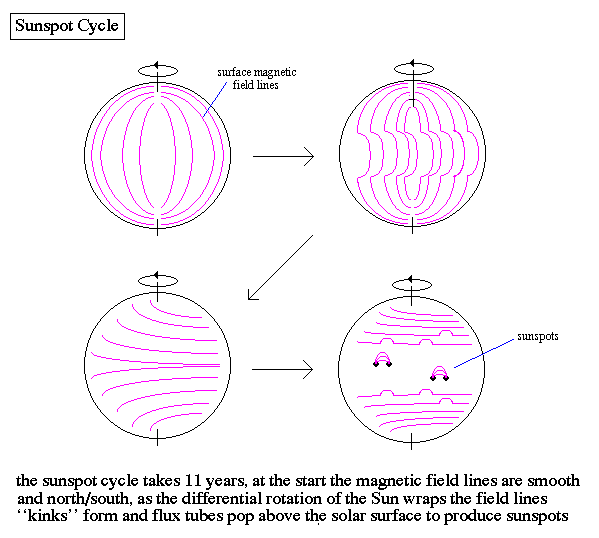
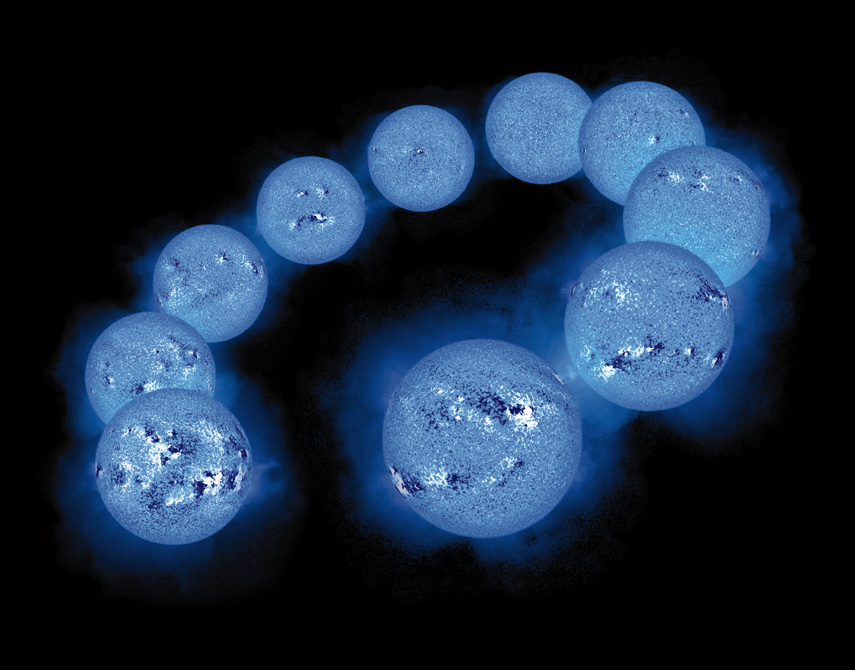

A sequence of snapshots of the changing solar magnetic field (left) and the soft X-ray corona (right) every year from 1991 to 2000 almost an entire solar cycle. Obtained one year apart between one solar maximum (lower right) and the next, they show the evolution of coronal structure due to changes in the magnetic fields at its base. Note the few magnetic features and lack of X-ray bright loops in the middle, at solar minimum. The regions where the magnetic fields are strongest, i.e. in the active regions, coincide with the brightest coronal X-ray emissions. The strongest magnetic fields are shown in dark blue and white, where white is upward pointing and dark blue points toward the Sun.
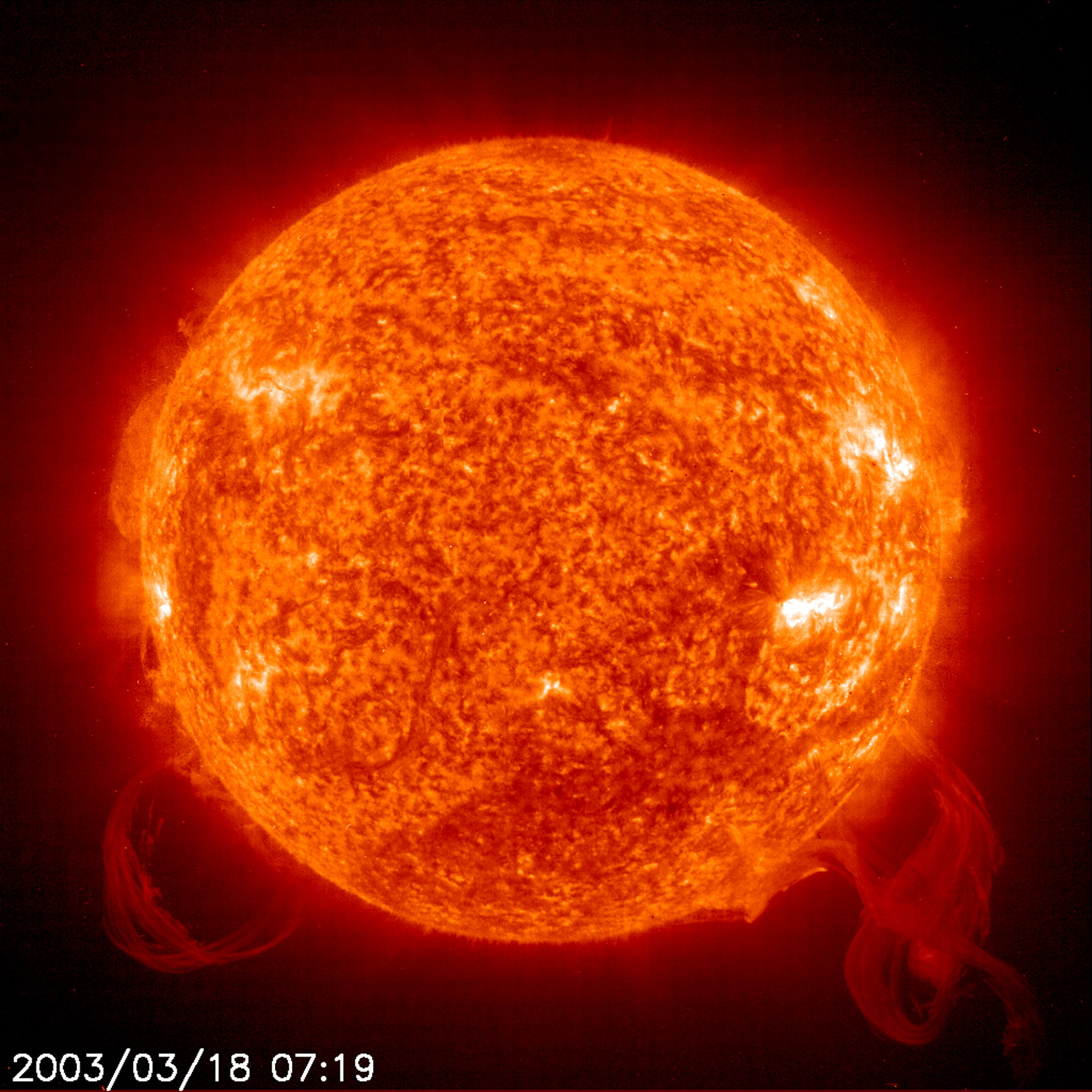
The chromosphere is a pinkish atmosphere above the Sun's photosphere. It emits an emission spectrum to indicate it is a very hot gas (20,000 K). The most complex and transient solar phenomena occur in the chromosphere including:
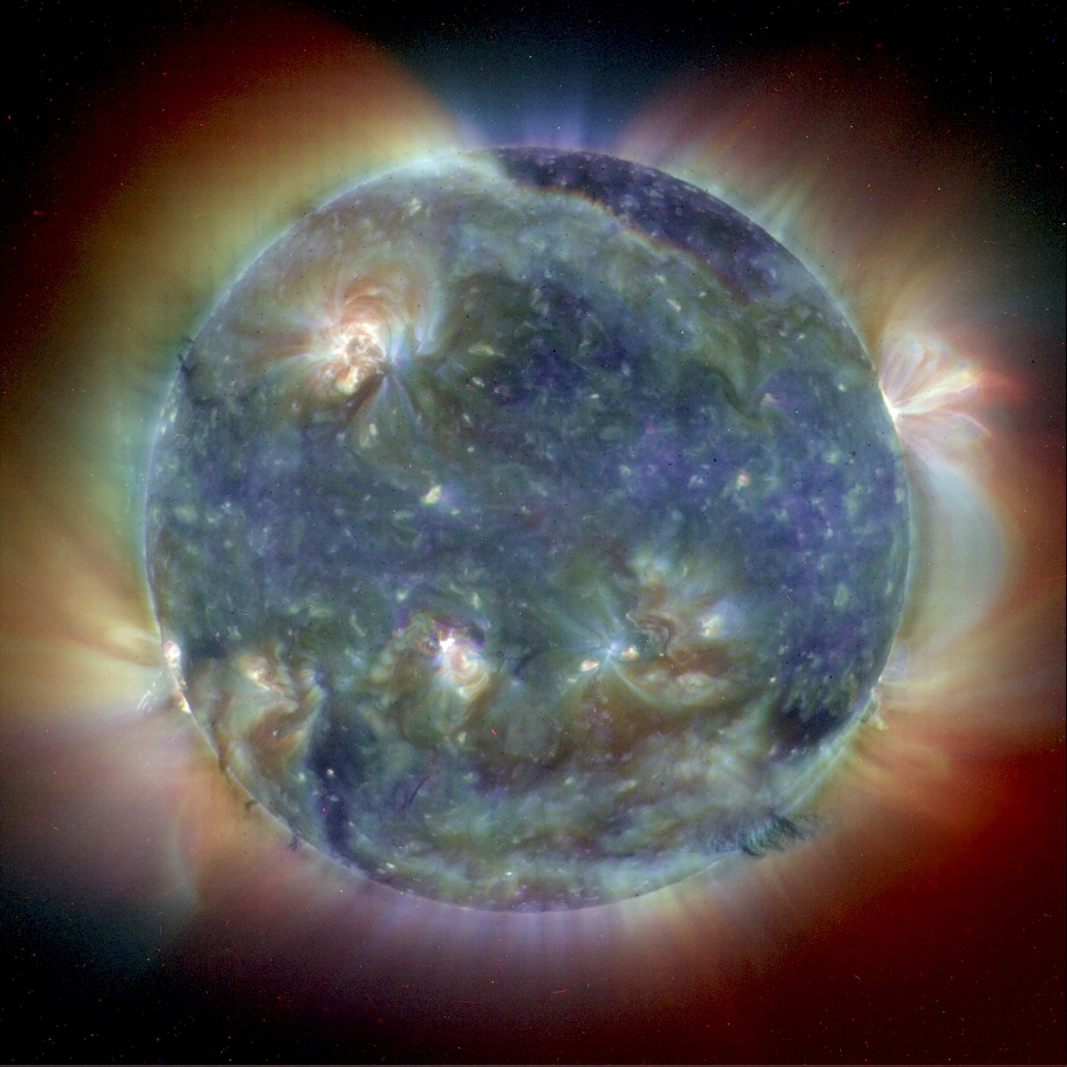
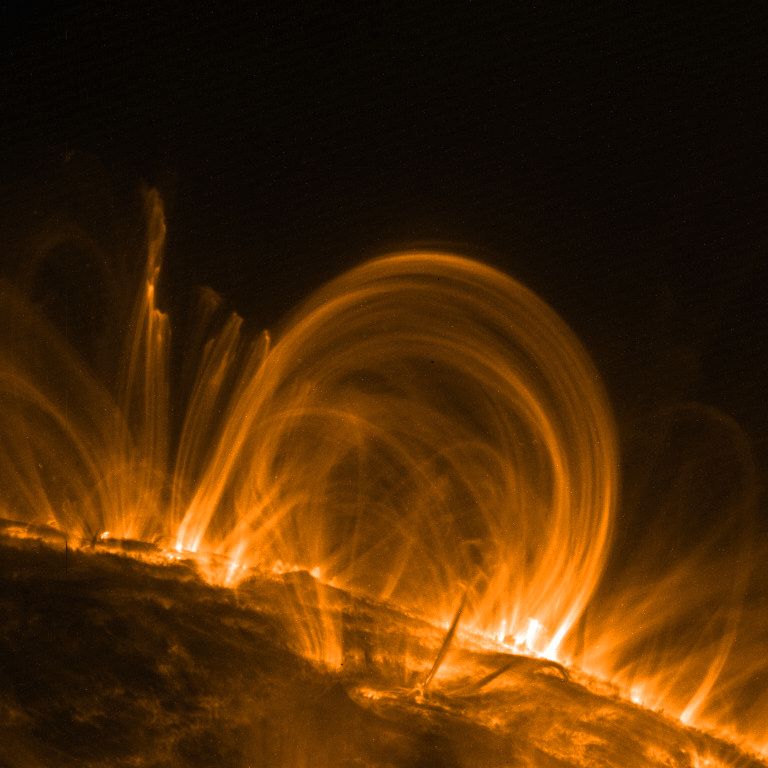

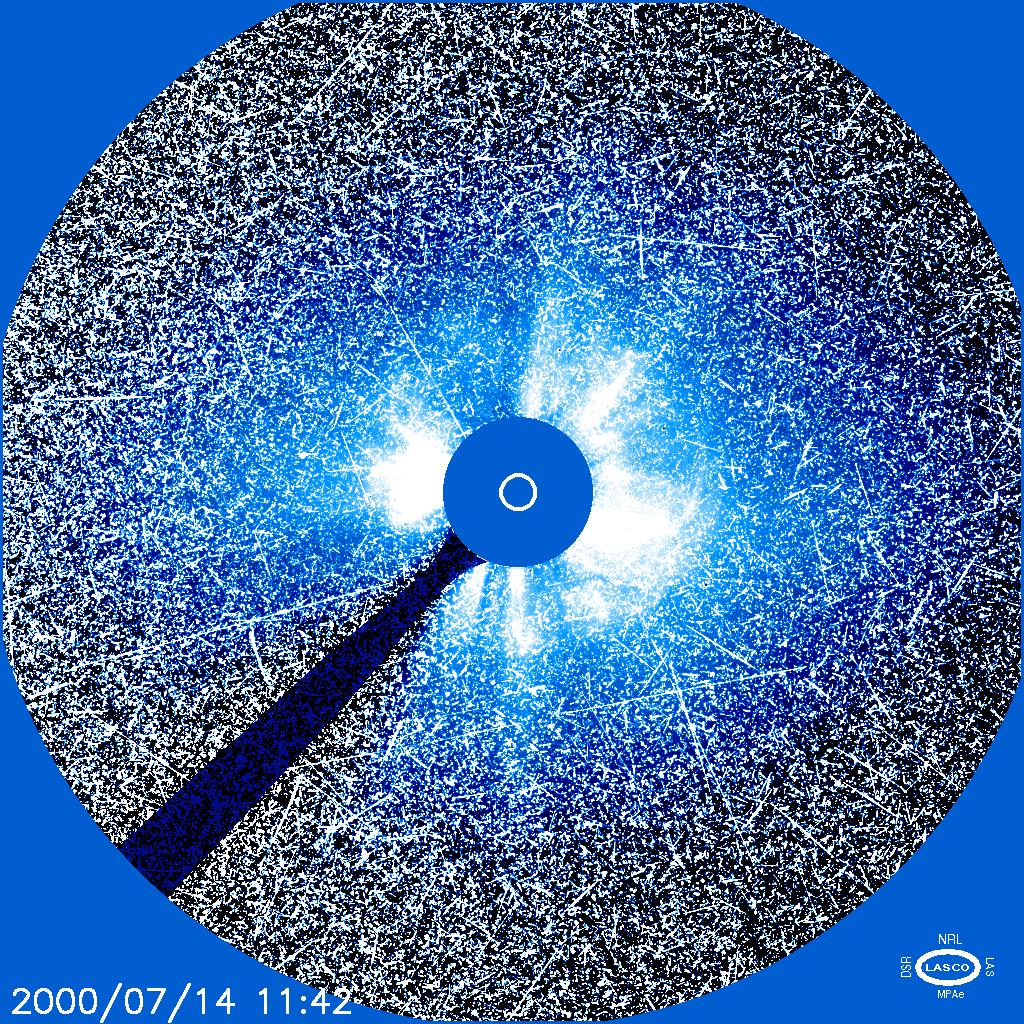
Corona:
The corona of the Sun is a large, white halo of glowing gas visible during a total eclipse. The corona gas is extremely hot (temperatures on order of a million degrees) and is the source of the solar wind.
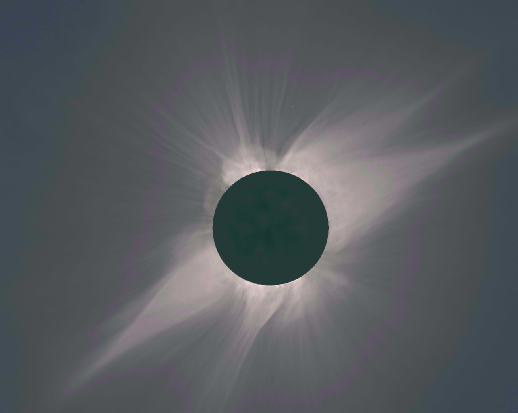
The solar wind is a constant stream of solar particles moving at faster than the escape velocity of the Sun's gravitational field. They escape through windows in the solar corona called coronal holes, regions where the magnetic fields are weak and the charged solar wind particles are not trapped in magnetic bottles.
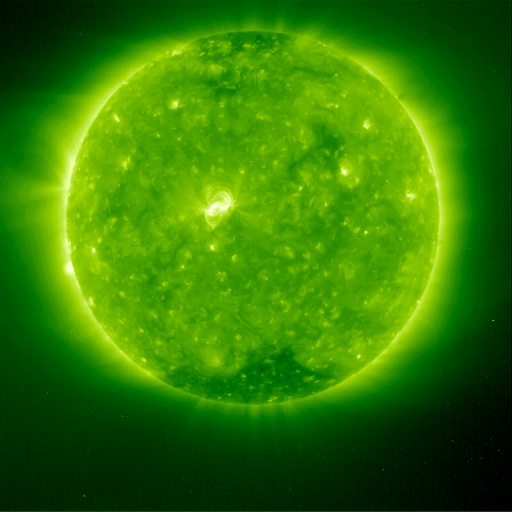
X-ray and the above UV picture of the corona show that the hot gas is connected to the magnetic features in the photosphere. Those low level structures extending into long streamers in the outer corona and heat the corona to its million degree temperatures.

|
|

|